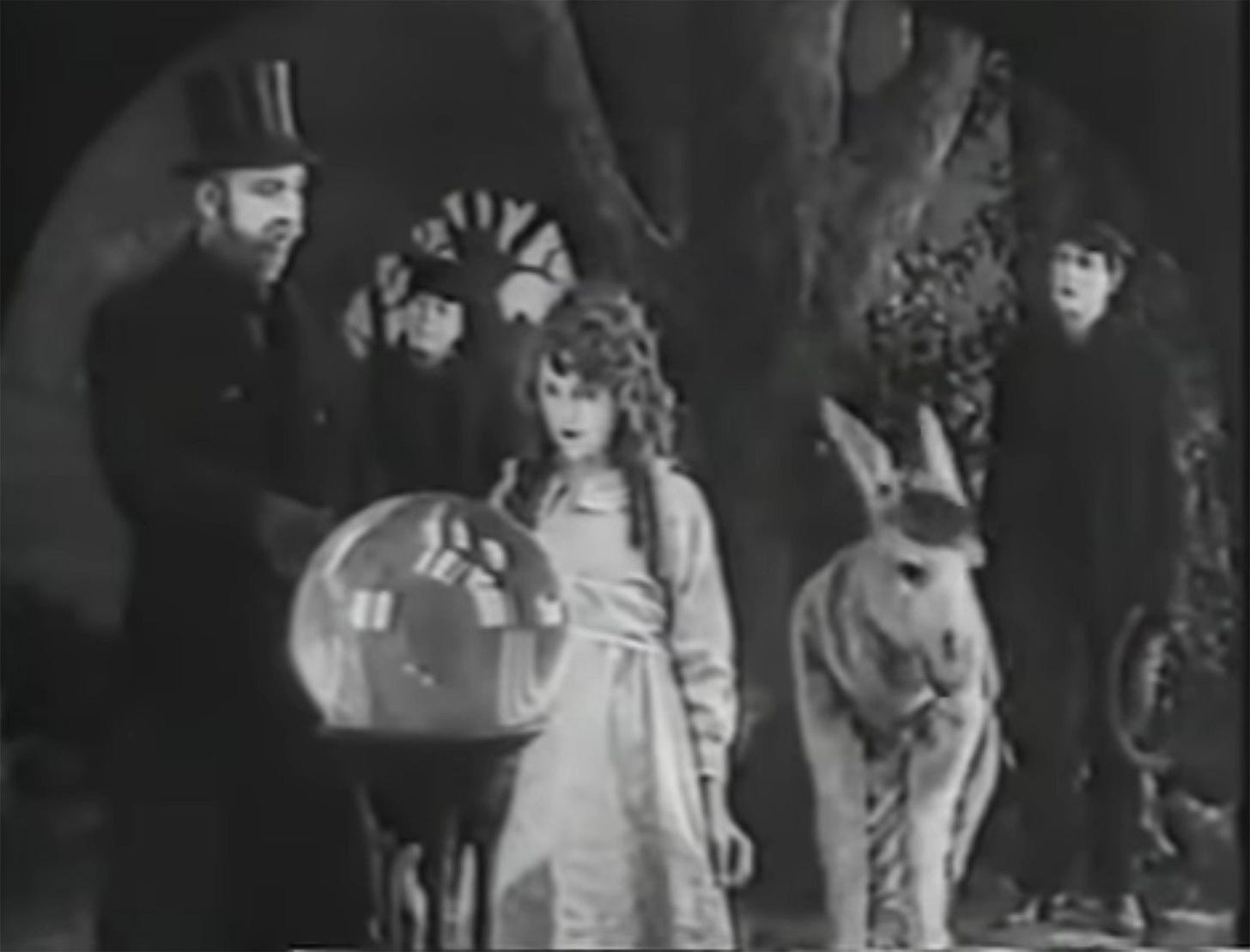GROSS/5 - 1917 - The Poor Little Rich Girl - a fairytale, a comedy, a fantasy - and a Disney princess 20 years before Snow White
Mary Pickford was famed for playing childlike parts, flighty young women with spirit. In 1917's The Poor Little Rich Girl, she broke new ground by playing an actual child.
GROSS is every year’s top-grossing movie, since 1913, reviewed.
1917. THE POOR LITTLE RICH GIRL, MAURICE TOURNEUR, ARTCRAFT PICTURES CORPORATION, 65 MINUTES.
Pickford turned 24 a month after the film was released but in The Poor Little Rich Girl she plays a child - to the perfect satisfaction of the rapturous audiences who made this one of the top-grossing movies of 1917.
The actual top movie of the year was Cleopatra, a huge Theda Bara historical romance that apparently cost half a million dollars to make (about the same as 1916 blockbuster 20,000 Leagues Under the Sea) but it’s apparently lost, which is kind of heartbreaking.
We’ve already encountered the on-screen energy and the off-screen business mind of the Amazing Mary Pickford - in 1914’s Tess of the Storm Country. We know that by the time of this movie she’d already been a big star for years - since before actors were even named in the credits, in fact - and was essentially an exec on everything she was in, with huge influence over every decision. She’d weary of playing these childlike roles but she was a very pragmatic businesswoman and played essentially the same plucky adolescent until well into her thirties, by which time she was a very rich movie executive.
As in Tess of the Storm Country, Pickford dominates every scene she’s in (other actors must have had mixed feelings about joining any Pickford production - knowing they’d be definitively overshadowed but with a decent chance of a hit). In this film, directed by Frenchman Maurice Tourneur, the overshadowed roles are terrific. They have a real fairytale charm - carefully-crafted storybook archetypes: funny, sinister, cruel, playful, stern.
There are some lovely street urchins, a charming organ grinder, various prickly and supercilious servants, some authentically remote and aristocratic grown-ups. There’s no wooden line-reading here, no static theatricality. In one scene, a dozen servants, in all the costumes of a great house - chef, maid, gardener, butler, chauffeur - enter a scene in a kind of pantomine procession, snaking around the furniture in a way that’ll make you giggle. In another, those urchins party riotously in the house’s fancy garden - a place of shadows and narrow pathways and low-hanging trees - street kids but also nymphs at play.
Pickford’s Gwendolyn spends essentially the whole of the second act in a kind of coma (for she has been drugged). The resulting dream sequence is delightful - full of proper childhood dread plus also angels and wooded glades and staircases and top hats and crystal balls and other lovely things - double-exposures and back projections are convincingly magical. She’s accompanied by a friendly plumber from real life (he keeps a length of pipe round over his shoulder as a reminder) and they encounter a group of hilarious bears, a splendid pantomime donkey, a couple (two of the nasty servants) who’ve been punished, one with huge ears and one with an extra scary face on the back of her head. You’ll want to watch it all again.
The movie's visual style is spookily like a Disney film from thirty years later. Walt was 16 when this movie was released. Presumably at this point he was busy soaking up the surreal, fairytale aesthetic of this and other (mostly French?) films. Alice in Wonderland, Beauty and the Beast, Dumbo - they're all brought to mind in the magical interiors, the light and dark of the big house and garden, the (multiple) dream scenes - and in the innocence and waywardness of our ‘princess’. Our director’s artful play with light and shade - and with bizarre imagery - must have run in the family - Jacques Tourneur, his son, was also a brilliant stylist of light - he made the 1942 Cat People and I Walk With a Zombie.
When Gwendolyn regains consciousness and is finally released from her confinement in her family’s fancy home in the city (it’s another archetype so we don’t know where it is but it’s basically a Park Avenue mansion styled as a fairytale castle) to the countryside, audiences must have breathed a big sigh - the atmosphere lightens, the light floods in. It’s a joy (and there’s lots of fun in the mud, tree climbing and so on).
Mary Pickford was in hundreds of films - at the silent movie peak a few years before this it was sometimes two or three per week. I’m no expert but I haven’t seen a weak one yet. They must exist but there’s obviously something about this actress that makes it almost impossible to make a bad film with her in it - and her contribution is always essentially the same: generosity, vivacity, charm. Mary Pickford was screen gold of the kind any studio would treasure.
I watched the film on YouTube but it’s a pretty sad print. See if you can find a DVD.
This Library of Congress article has some fascinating detail about the way Pickford achieved her convincingly childlike characters: “…relax the brow and corners of the mouth, point toes inward, loosen legs.”
Here's a list of all the top-grossing films since 1913 and here's my Letterboxd list.





